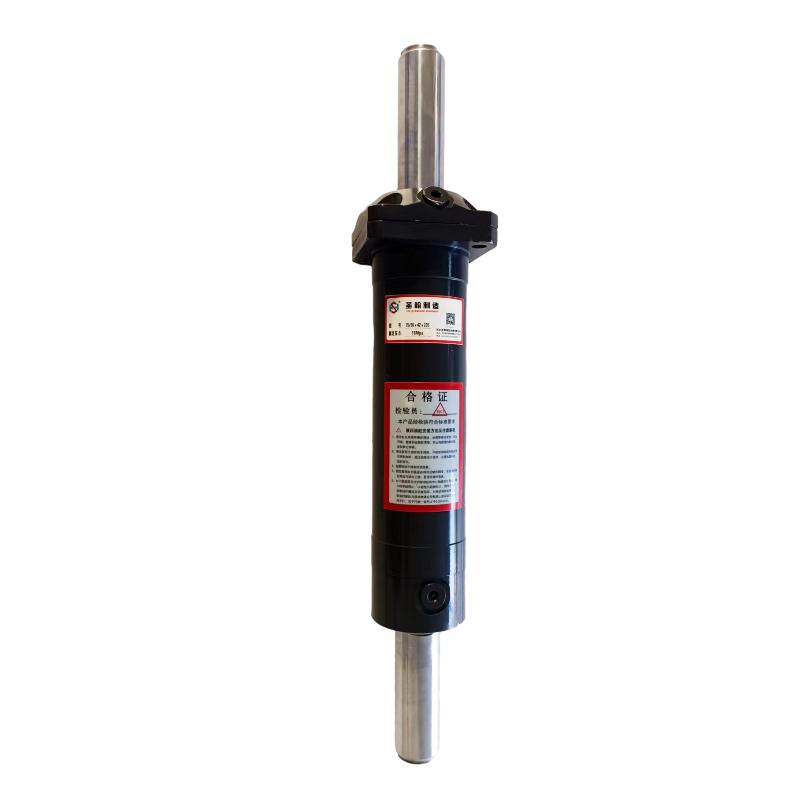ಜುಲೈ . 27, 2024 18:15 Back to list
Steps and Techniques for Custom Rebuilding a Hydraulic Cylinder to Enhance Performance and Longevity
Custom Rebuilding a Hydraulic Cylinder A Comprehensive Guide
Hydraulic cylinders play a critical role in a variety of applications, from industrial machinery to automotive systems. Over time, these components can wear out or become damaged, leading to decreased performance and potential failures. Custom rebuilding of hydraulic cylinders offers an effective, cost-efficient solution to restore their functionality without the expense of purchasing new units. This article outlines the key steps and considerations involved in the custom rebuilding process.
Understanding the Need for Rebuilding
Hydraulic cylinders are subjected to high pressure and constant movement, leading to wear on seals, rods, and other components. Common issues include oil leaks, reduced power output, and erratic operation. Instead of discarding a faulty cylinder, custom rebuilding allows for a thorough inspection and replacement of worn parts, extending the lifespan of the equipment.
The Rebuilding Process
1. Initial Assessment The first step in custom rebuilding a hydraulic cylinder is to conduct a comprehensive evaluation. Technicians should inspect the cylinder for external damages, such as cracks or corrosion, and assess the internal mechanism. This includes checking for wear on the piston, seals, and cylinder bore. Accurate diagnostics are crucial in determining whether the cylinder can be successfully rebuilt or if replacement is necessary.
2. Disassembly Once the assessment is complete, the hydraulic cylinder must be disassembled carefully. This requires proper tools to avoid damaging any components. Each part should be cleaned and organized systematically, allowing easy access for inspection and replacement.
custom rebuilding a hydraulic cylinder

3. Inspection and Measurement After disassembly, each component should be meticulously examined for signs of wear or damage. Measurements are taken to ensure that they meet specifications. This step is vital to identify parts that need replacement and to confirm whether any modifications are necessary for improved performance.
4. Component Replacement Based on the inspection results, faulty parts are identified and replaced. Custom rebuilding allows for adjustments to be made, such as using upgraded materials that offer increased durability or better performance. Common replacements include seals, rods, and bearings. Selecting high-quality components is essential for ensuring the longevity of the rebuild.
5. Reassembly After all necessary components have been replaced, the cylinder is carefully reassembled. During this process, it's important to follow specific torque specifications and assembly guidelines to maintain the cylinder's integrity. Attention to detail ensures that the unit will perform reliably under pressure.
6. Testing and Quality Control After reassembly, the rebuilt hydraulic cylinder must undergo rigorous testing. This typically involves pressurizing the cylinder to ensure there are no leaks and that it operates smoothly. Any adjustments required can be made during this phase to guarantee optimal functionality.
7. Final Inspection and Documentation The final step in the rebuilding process involves a thorough inspection to confirm that the cylinder meets all operational standards. Proper documentation of the rebuilding process, including replaced parts and testing results, should be provided to the client for their records.
Conclusion
Custom rebuilding a hydraulic cylinder is a cost-effective method of maintaining and extending the life of essential hydraulic components. By carefully assessing, disassembling, and replacing worn parts, technicians can restore functionality and even enhance performance. This process not only saves money but also contributes to sustainability by reducing waste. Whether in industrial settings or automotive applications, understanding the rebuilding process can empower operators and maintenance teams to make informed decisions about their hydraulic systems.
-
Fork Lift Power Units - Hebei Shenghan | Efficiency, Reliability
NewsJul.13,2025
-
1.5-Ton Turbocharged Cylinder-Hebei Shenghan|Hydraulic Solution,Energy Efficiency
NewsJul.13,2025
-
Auto Hoist Power Units-Hebei Shenghan|Efficiency&Industrial Lifting
NewsJul.13,2025
-
Double Acting Power Units-Hebei Shenghan|Hydraulic Solutions,Industrial Efficiency
NewsJul.13,2025
-
1.5 Ton Lifting Cylinder 70/82-40-290-535 - High-Performance Hydraulic Solution | Hebei Shenghan
NewsJul.13,2025
-
Fork Lift Power Units - Hebei Shenghan | Efficiency&Reliability
NewsJul.13,2025
